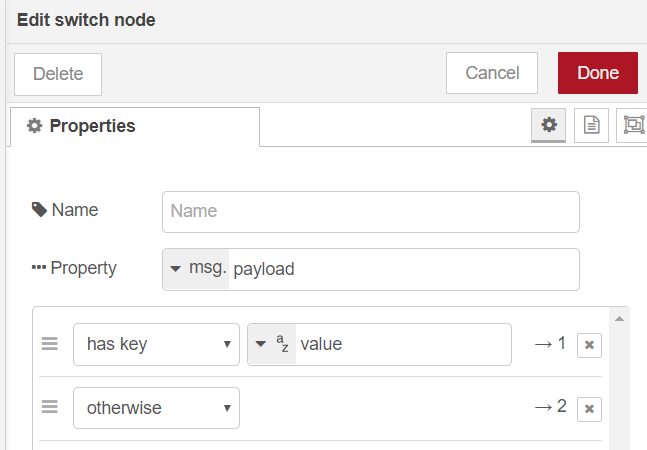No matter what you would need 2 different parsers, but couldn't you have just run the single node that spits out triggered and event payloads into a switch node, and did a quick "has key" check on msg.payload.value to pick the path taken?

Not a big or real functional difference. Just asking.

